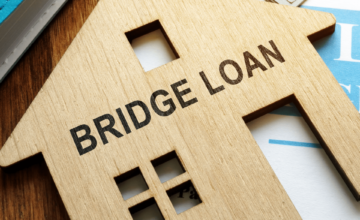
Buy To Let Mortgages
If you’re an experienced landlord purchasing a new property, looking to remortgage an existing one or have just made the decision to become a landlord, choosing the right Buy to Let (BTL) mortgage is really important. There are many types of BTL mortgage available and finding the best one to suit your needs can be a daunting prospect.
A buy-to-let mortgage is a mortgage you would use to buy a property before renting it out, and is distinct from a standard residential mortgage as it is tailored to the specific needs of property investors and landlords. Your mortgage repayments should be covered by your rental income, but there are additional expenses and lending criteria to consider.
It’s advisable to seek professional advice when venturing into the buy-to-let market. Consulting with mortgage advisors, tax professionals, and property management experts can provide valuable insights and help you make informed decisions.
This is where our team of experts at Vincent Burch Mortgage Services can help. With over 200 years of combined knowledge and experience as a specialist BTL mortgage broker, we know how to navigate the detail, smooth the process and find the right finance deal for your investment. And being an independent mortgage broker we can access the best BTL mortgage rates on the market, from a wide range of lenders, at the touch of a button.

Get the right BTL mortgage advice
We understand that every customer is different and the type of mortgage you’re searching for will depend on your individual circumstances. Sometimes you’ll need a more specialist buy to let mortgage. Here are some examples:
Get a Mortgage Quote
Advice that’s tailored to your own bespoke situation.
Enter your contact details and we will contact you, typically within 10 minutes (during normal business hours).

We’ll reveal the best mortgage deal!
As an independent specialist broker we can offer you a great choice of mortgages from a wide range of BTL mortgage lenders, such as Birmingham Midshires, Paragon and The Mortgage Works. This means we can quickly and easily compare the most competitive rates across the whole market. And as a fee-free mortgage broker there’ll be no hidden costs when it comes to getting you the best deal.

No Broker Fee*
Let Vincent Burch Mortgage Services arrange the best mortgage available for your circumstances.
To request a phone call from one of our advisors, please submit your details above and we will contact you at the earliest possible time.
What is a buy to let mortgage and how does one work?
A buy to let mortgage is for someone who wants to purchase a residential property to let out and usually earn the rental income paid by the tenants. Instead of buying the whole property with their own money, a buy to let mortgage allows the purchaser to only commit a proportion of the money towards the purchase. For example, if you wanted to buy a property to rent for £200k, instead of committing £200k to single purchase transaction, the Buy to Let mortgage could see that £200k be slit into 4 lots of 25% deposits and allow the purchaser to buy 4 properties instead of 1 property.
How many buy to let mortgages can I have?
While there in no limit on the number of buy to lets anyone can have, it is dependent on each mortgage lender on their acceptable maximum number for their mortgage lending purposes. In my experience, all buy to let lender will allow a maximum of 3 mortgaged properties, after that the Financial Regulators consider you as a Portfolio Landlord. The next issue is that some lender will restrict all your total mortgage balances by 10 times your taxable income. The next restriction with lenders is 10 property maximum, but there are many ways a lender will consider their 10 max. Some say maximum of 10 mortgaged properties and some say maximum of 10 in your personal name and can ignore properties own by a Limited Company. However, there are many lenders available for landlords with more than 10 properties.
Is a buy to let property worth it?
Purchasing and managing a buy to let is ultimately a business. You take rental income (turnover), pay costs including any mortgage payments and the remainder is your profit. Providing you make a profit, then like any business its worth while. But in addition and unlike most other businesses, your assets (properties) usually increase in value each year. So, there are 2 ways your buy to let business works for you; firstly the monthly rental income and secondly the Capital Appreciation for the time you own the asset. Planning is important, not least your exit. If you buy 2 or 3 properties and hold them for 10, 20 years, when you sell you are likely to be exposed for Capital Gains Tax (CGT). Or use them to top up your Pension income and leave them to the kids for inheritance. Lots of options, but Plan now to save later.


